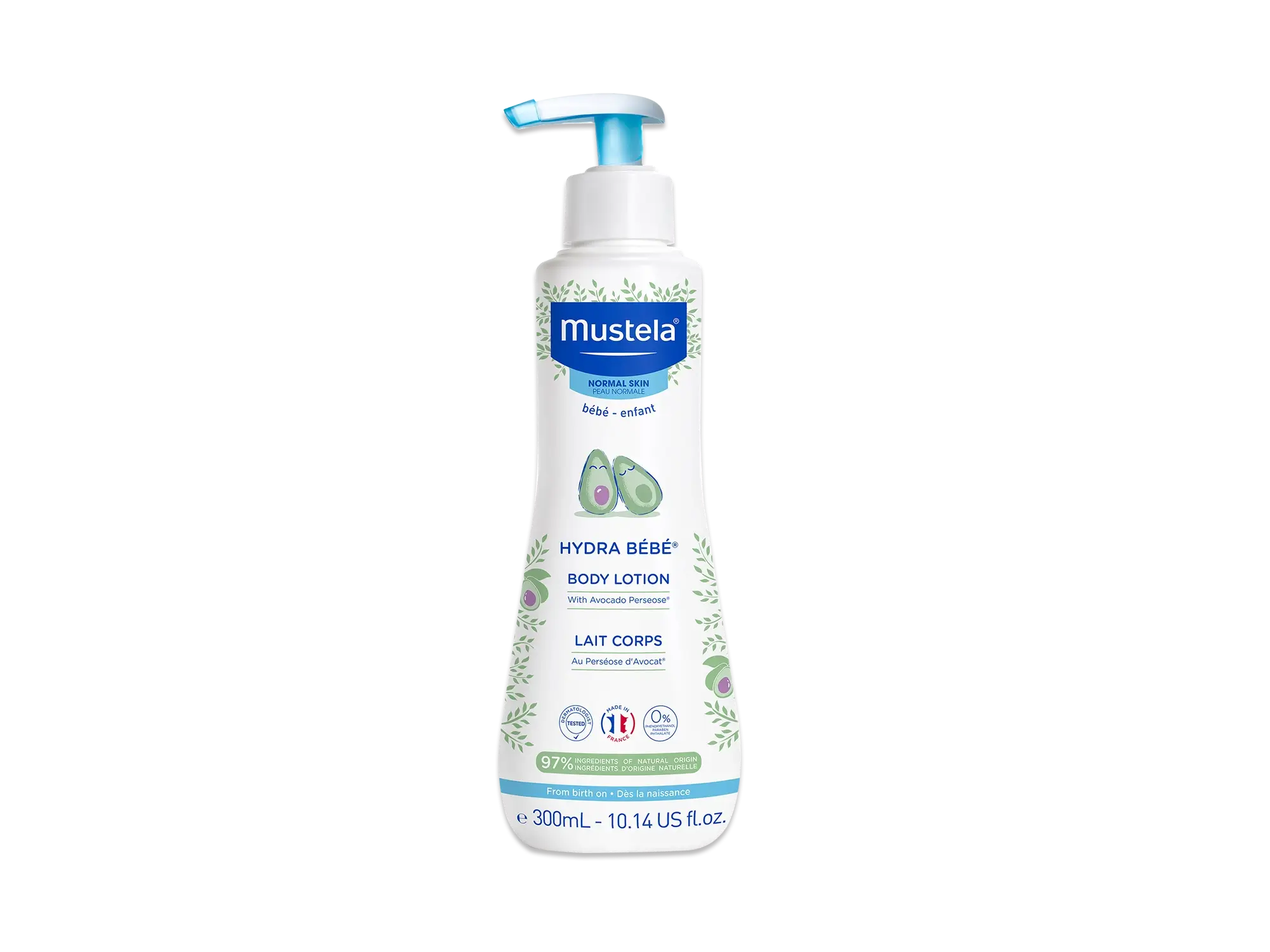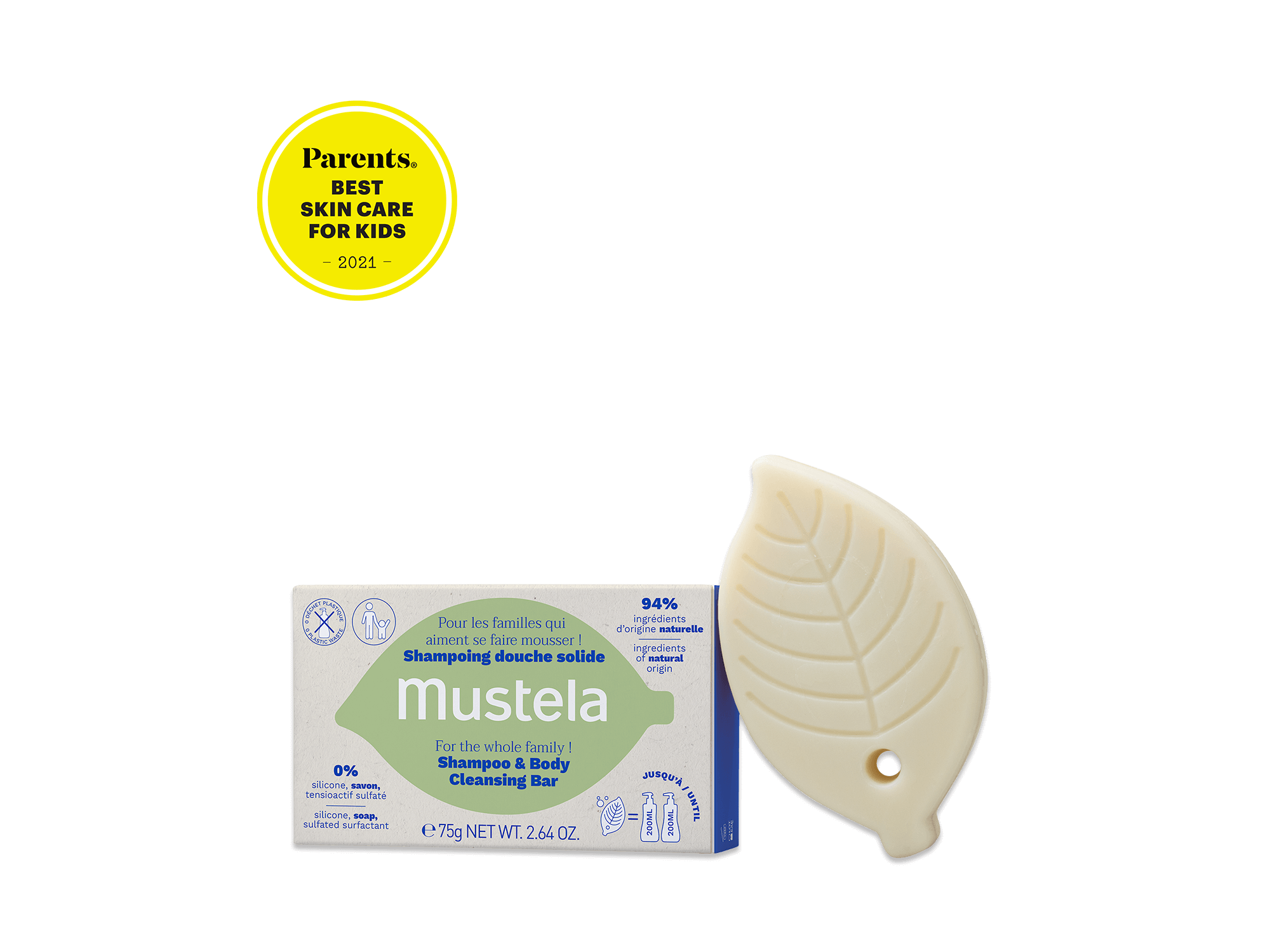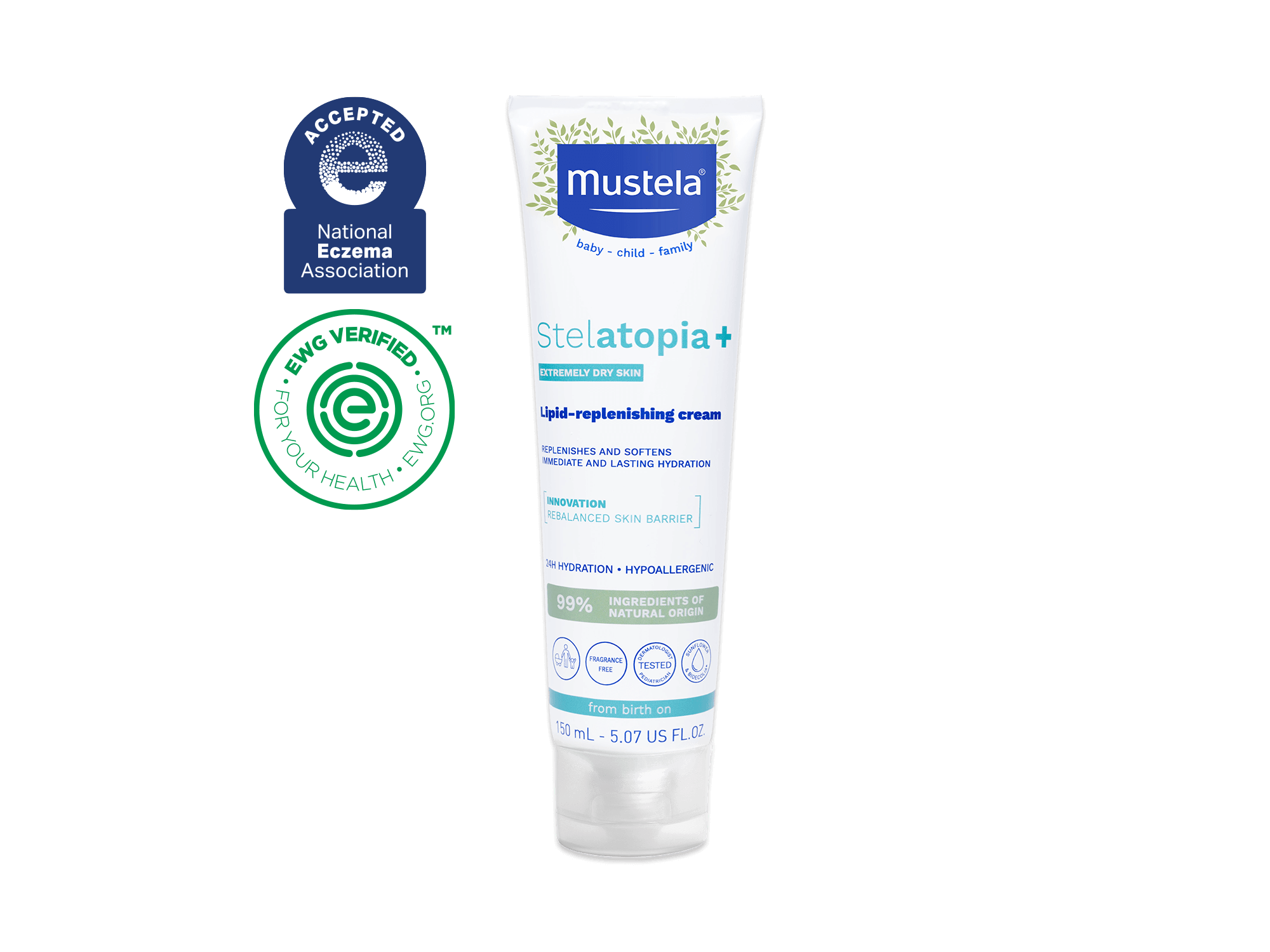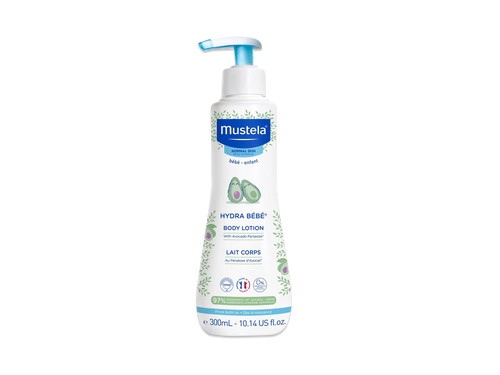As a new mom, properly nourishing your newborn is one of your top priorities. To help ensure your little one gets the nutrients they need to support their growth and development, we created this baby feeding schedule by month for the first year of their life.
A newborn’s diet should primarily consist of breast milk or formula. But, as they grow, introducing solid foods into their diet becomes important. Below, we'll share guidelines for feeding at different ages and stages so you can confidently nourish your baby.
Signs Of Hunger

While it’s nice to have a general idea of how often your baby should eat, your primary goal should be feeding them when they’re hungry.
But how do you know whether they’re ready to eat or just fussing? Here are some hunger signs to watch for:
- Stretching, yawning, and rooting (turning their head in search of food
- Opening their mouth when you touch their cheek
- Making sucking motions
- Crying or fussing
If you notice these signs and it’s been a little while since your baby last ate, chances are good that they’re hungry.
How Often Should Your Baby Eat?
At first, it may seem like all your baby wants to do is eat. Their stomach is tiny, so they must eat frequently to take in enough milk or formula for their caloric needs.
In general, here’s what you can expect in terms of feeding frequency for each 24-hour period:
- 0-3 Months: 8-12 feedings
- 3-6 Months: 6-8 feedings
- 6-9 Months: 5-7 feedings
- 9-12 Months: 4-5 feedings
Of course, every baby is different. Some may need to eat more or less often than the guidelines above. For example, if you’re breastfeeding, your baby must eat more frequently since breast milk digests faster than formula. Also, nursing often helps build your milk supply.
Be sure to follow your baby’s hunger cues and trust your instincts. If they seem hungry outside their regular feeding schedule, offer them a breast or bottle.
Sample Baby Feeding Schedule By Month
Now that you know the general guidelines, let’s look at some sample baby feeding schedules for babies of different ages. These can give you a better idea of what your days might look like.
1 Month

Newborn babies are trying to get the hang of this feeding thing. Before birth, the umbilical cord gave them all the nutrition they needed, so it’s a big transition for them!
It’s best to feed on demand at this age and not try to stick to a schedule. You’ll want to offer breast or bottle every two to four hours, around the clock. This means you may need to wake them up to get them to eat.
Each feeding session should last 20-45 minutes if breastfeeding. For formula-fed babies, plan on them eating between 2 to 3 ounces per feed. However, ask your doctor if that’s the right amount for your little one.
Keep in mind that frequent nursing can cause nipple cracks. Keep our Organic Nursing Balm on hand to soothe any irritated skin.
2 Months
You and your baby learned a lot about feeding last month, and you’re likely settling into a new normal. During their second month of life, feeds will look pretty similar to what you’ve been doing.
You’ll still want to feed on demand to ensure your baby gets the necessary nutrients. But don’t be surprised if your little one suddenly wants to eat every half an hour or more frequently.
This temporary increase is known as cluster feeding, and though it can be overwhelming, it’s normal. If you breastfeed, cluster feeding can increase your milk supply and help your baby get the extra calories they need to grow.
However, even formula-fed babies may go through periods of cluster feeding, and that’s OK too. Follow their hunger cues and offer them a bottle whenever they seem hungry.
Just monitor their intake, as formula digests more slowly than breast milk, and overfeeding can lead to uncomfortable gas and bloating. If they get gassy, try different burping positions or gently massage their tummy to help relieve their discomfort.
3 Months

By now, your baby should have a better handle on feeding. They’ll be more efficient at sucking and taking in milk, so you should see fewer feedings of larger volumes. Each time your baby eats, they’ll consume between 4 to 5 ounces.
At three months, your baby may sleep through the night. But if they’re not yet there, don’t panic. They may still need that boost of food to help them get through the night and stay full until morning.
One solution is to get your baby out of bed before you hit the pillow and feed them while they’re still mostly asleep. This is known as a dream feed, and it can provide a little extra fuel that may help your baby sleep for longer periods.
Sticking to a more consistent feeding schedule can help them get enough nutrients during the day. For instance, you could try offering a breast or bottle at the following times:
- 7:00 a.m.
- 10:30 a.m.
- 1:30 p.m.
- 5:00 p.m.
- 8:00 p.m.
- 11:30 p.m.
- 3:00 a.m. (If your baby still wakes)
However, three-month-old babies are still really young. So if your little one gets hungry before the next scheduled feed, let them eat. As their stomach grows in the coming months, they’ll be able to go longer between feedings.
4 Months
When your baby is four months old, you’ll look back and be amazed at how far they’ve come. At this age, your baby is more alert and interactive. Their personality is blossoming, and they have much more control over their body.
They’re likely pushing up on their elbows during tummy time and grasping toys in their hands. They may even be able to roll over.
These new skills require energy, meaning they need a lot of breast milk or formula to sustain them. The good news is that their stomachs are also growing, so they can eat more at each feeding.
Here’s a look at how much you can expect your four-month-old to eat during the day:
- Breastfed babies will need to eat about every 3-4 hours. They’ll nurse for 5-10 minutes on each side.
- Formula-fed babies need to eat every 4-6 hours. They’ll need about 4 ounces in each bottle.
Your baby may be sleeping through the night (hooray!) but, unfortunately, they may experience the dreaded four-month sleep regression. While this is a normal phase, it can be hard to go back to middle-of-the-night feeds when you’ve gotten used to a full night’s rest.
5 Months

Your little one needs a lot of milk to help them master sitting up and rolling over. In addition, a big growth spurt often happens during this age, which means they may want to eat more than ever.
Additionally, as they grow, their stomach does as well. It’s now the size of their fist and can hold more milk these days. During each feed, they’ll consume about 6 ounces of milk.
To keep a consistent baby feeding schedule, try this schedule for offering a bottle or breast:
- 7:00 a.m.: First feeding
- 11:00 a.m.: Morning snack
- 2:30 p.m.: Lunchtime
- 6:30 p.m.: Dinner
- 10:00 p.m.: Bedtime snack
- 3:00 a.m.: If needed
Of course, remember to feed on demand if your little one is hungry between these times.
6 Months
Once your baby is sitting up without support, has reached at least six months of age, and is interested in food, you can begin incorporating solid foods into their feeding schedule. Many parents prefer baby-led weaning, eliminating the need for purees.
But no matter your feeding style, milk will still be their primary food source until they turn one. So continue to give them 6 to 8 ounces of formula or breastmilk at each meal.
After they’ve drunk their milk, provide them with some additional baby-friendly food. But remember to introduce only one new food at a time so that you can watch for allergies.
Try a feeding schedule like this:
- 8 a.m.: Wake up and drink milk, then solids
- 12 p.m.: Lunch with milk, then solids
- 4 p.m.: Afternoon snack of milk
- 7:30 p.m.: Dinner time with milk, solids
- 10 p.m.: Bedtime snack of milk
At this age, about two-thirds of all babies are sleeping through the night. If yours isn’t yet, just offer them formula or breast milk when they wake. They don’t need any solids in the middle of the night.
This is the month when some nursing moms begin weaning their babies, though there’s nothing wrong with breastfeeding longer. In fact, the American Academy of Pediatrics recommends exclusively breastfeeding for six months, then continuing to nurse for at least two years.
7 Months

At seven months, your baby is ready for more: more solid foods with different textures and flavors and larger portions of breastmilk or formula.
If you pump, aim for 30 ounces of expressed milk each day. Formula-fed babies will consume 24 to 32 ounces throughout the day, divided over three to five feedings.
Breastfed babies will nurse three to five times a day, typically with longer sessions in the early morning and right before bed.
In addition, your little one may be ready to try a sippy cup. You can offer water, formula, or breastmilk in a cup during meals.
At first, they might not understand how this new object works, so don’t be discouraged if they don’t get any liquid out. Be patient and continue offering the cup. Eventually, your little one will get the hang of it and drink like a champ.
As far as solids go, here are some foods to consider introducing at seven months of age:
- Mashed fruits and vegetables
- Soft, cooked pieces of pasta
- Small pieces of cheese
- Thin strips of well-cooked meat (avoid tough cuts)
- Toast with a small amount of butter or cream cheese
As your baby becomes more accustomed to eating solid foods, they may start showing preferences for certain flavors or textures.
That’s completely normal, and it can help you determine which foods they most enjoy. But don’t be surprised if those preferences change frequently; there’s still a lot to try!
8 Months
It may seem like your eight-month-old baby is becoming more active every day. They might be crawling or even pulling to stand.
Getting them to sit still long enough to finish a meal may seem impossible, but it’s important to continue working on good eating habits. For safety, your little one shouldn’t roam around with food in their mouth. Instead, encourage them to sit in their high chair until they’re done eating.
A good way to keep them occupied while eating is to offer finger foods like chopped hard-boiled eggs and bite-sized pieces of soft fruits and vegetables.
They'll work on their fine motor skills as they pick up each piece of food. Meals may still be messy, but that won’t always be the case.
Your baby’s active motions likely continue even through breastfeeding sessions. If you feel like you’re in a circus while juggling a moving baby and trying to nurse, you’re not alone. Here are a few tips that may help:
- Nurse in a quiet room to avoid distractions
- Nurse when your baby is just waking up from sleep, while they’re still drowsy
- Make sure they’re still having four to six wet diapers a day (this indicates they’re getting enough breastmilk)
- Try the side-lying position to encourage your baby to relax
9 Months

By now, your baby should be getting pretty good at eating solid foods. They’re likely ready for chunkier textures and may be interested in self-feeding.
Babies at this age still need 24-32 ounces of milk daily. You can break that up into the day’s main meals and then offer two smaller snacks without milk if you’d like. If breastfeeding, you’ll likely nurse your baby for 5-10 minutes per side.
Here’s a sample schedule:
- 7 a.m.: Breakfast (milk and solids)
- 10 a.m.: Mid-morning snack (solids)
- 1 p.m.: Lunch (milk and solids)
- 4 p.m.: Afternoon snack (solids)
- 7:30 p.m.: Dinner (milk and solids)
- 10:00 p.m.: Final nursing or bottle feed before bed
As your baby gets closer to their birthday, many begin to prefer solids. However, milk is still important, so don’t skip it or transition to cow’s milk before they turn one.
10 Months
Babies at 10 months old are busy, curious beings, which means mealtimes can be exciting! You never know if they’ll eat that bite of food or learn more about gravity by throwing it off their tray. And if they aren’t in a high chair, they might decide to walk away right in the middle of lunch.
Although your baby doesn’t yet have all their teeth, they’re becoming more adept at chewing. This means you can start offering a wider variety of foods in different textures, which is a lot of fun.
However, not all foods are appropriate for babies. Avoid choking hazards like peanuts and popcorn, and cut their food into small pieces before serving it. You may also consider taking a first aid course so you know what to do if your child starts to choke.
Remember that most of your baby’s nutrients should still come from breast milk or formula. It’s essential to offer 24-32 ounces daily, spread throughout three meals.
11 Months
It’s incredible how far your baby has come over the past 11 months. They’ve grown in leaps and bounds, both physically and developmentally. And now, they’re almost a year old!
As you prepare for your baby’s first birthday in the coming month, continue to provide them with a healthy and varied diet. They’ll also need the same amount of breastmilk or formula as last month.
At this age, your baby can handle a variety of flavors and textures and may be able to eat most of the same foods as you. But it’s important to focus on whole, nutrient-dense options instead of highly processed or sugary foods. This will give them the nourishment they need to thrive.
Also, know that your baby’s stomach is still small. They don’t need a huge dinner plate loaded up with food. Instead, offer them small portions on a child-sized plate.
This keeps their meal from feeling overwhelming and allows them to try new foods without feeling pressured to finish everything.
12 Months

Congratulations, your baby is a year old! That milestone is worth celebrating — enjoy cake and ice cream together. Your little one will probably love the sweet taste of this special treat.
In terms of everyday food, your baby’s diet can now include cow’s milk. While you can continue to breastfeed or offer formula, it no longer needs to be their main source of nutrients.
Your one-year-old’s feeding schedule can more closely align with your own now. They can eat three meals daily, with a snack or two in-between if they get hungry.
As your baby becomes a toddler, their food preferences may change rapidly. Don’t give up offering a variety of healthy options, even if they only want one type of food for days on end. Keep introducing new flavors and textures to help expand their palate.
Your little one may not want to try a new food the first few times they see it on their plate. Some people believe it can take up to 20 exposures to something new before your child willingly eats it. While you’re waiting, keep offering healthy foods and be patient with their pickiness.
Baby Feeding Tips
Now that you have a better idea of how much your little one should be consuming, here are some feeding tips to help each meal go more smoothly.
- Minimize distractions: Some babies have trouble eating when there’s so much to see.
- Find a quiet location to help them settle down and eat.
- Burp after each feed: Burping helps release trapped air bubbles, so remember to burp your little one.
- Keep Home Compostable Wipes on hand: Introducing solids can be messy. These wipes can help keep your baby clean.
- Track their output: Ensure your baby has plenty of wet and dirty diapers.
- Stick to breast milk or formula: This should be their primary food and drink before they turn one, so skip the water and juice.
- Wash your baby’s hands: Help them practice washing their hands before they eat solids. Our No Rinse Cleansing Water makes it simple.
- Watch for growth spurts: If your baby is extra hungry and fussy, they may be getting ready to grow and want more food.
- Talk to your doctor about your child’s nutritional needs: Your baby is one-of-a-kind and may have unique feeding requirements. Always follow your doctor’s recommendations to help keep your baby healthy.
Feed Your Baby With Confidence

A baby feeding schedule by month is an excellent tool for new parents to help track your little one’s intake. However, don’t let the plan be your dictator. Be flexible. Your baby may need to feed more often, especially when they’re growing. So keep your eyes peeled for hunger cues.
And as your baby grows and starts eating solids, stock up on Home Compostable Wipes and No Rinse Cleansing Water from Mustela. Then clean-up will be a breeze, and you can move on to the next task on your busy schedule!



















